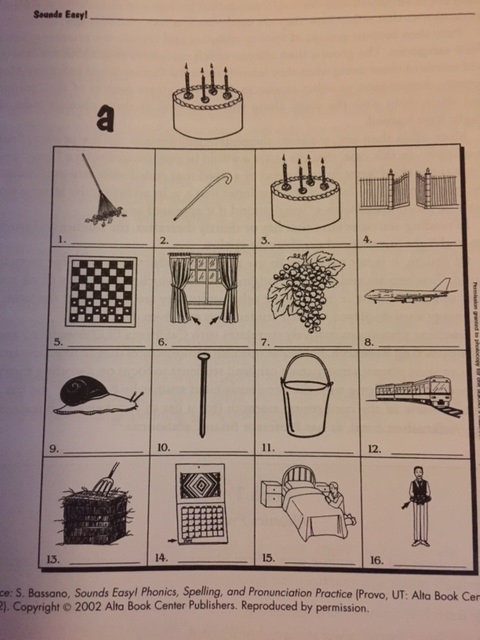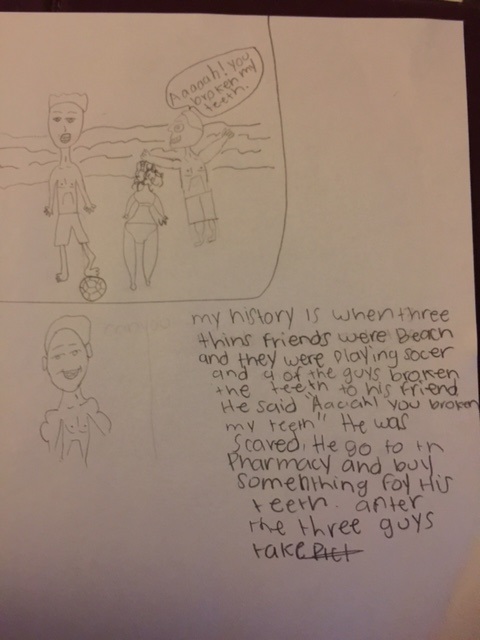I have big concerns about how phonics is often taught in schools (see The Best Articles & Sites For Teachers & Students To Learn About Phonics), but I do think it certainly has a role in language teaching and learning.
As I’ve often written, I love the book Sounds Easy and it’s an essential component of how I teach English Language Learner Beginners.
I don’t really follow many of the guidelines in the book about how to use it, but the reproducible sheets are pure gold:
I typically use an inductive model with the worksheets (see The Best Resources About Inductive Learning & Teaching) – after doing a page together, students develop their own categories for the words; then they use a dictionary to add new words that fit into their categories.
Today, I tried a new “twist” that seemed to work well. After students categorized and added new words, I asked them to draw a picture using as many of the objects or actions they had put into their categories. Next, they wrote sentences and, and if they could, a story about the picture.
Here’s an unfinished product of that phonics extension:
Students will next present their drawing and sentences.
It’s by no means a brilliant addition to a phonics exercise, but students seemed to enjoy it and and it made phonics an even more communicative activity.
You can’t go wrong with that….
ADDENDUM:





Recent Comments